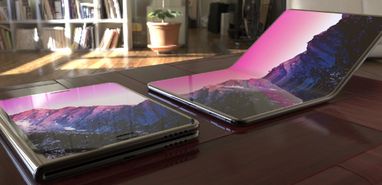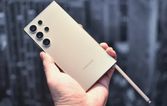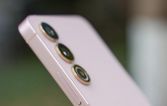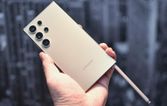
The concept of a foldable phone sounds more like a prop from a futuristic television show we’d binge-watch on Netflix, yet here we are in September 2018 with the news that Samsung are highly likely to unveil their foldable tech in just a few short months.
Dubbed the Samsung Galaxy X, there have been rumours for years now that Samsung were working on a foldable mobile, but the complications of such a technological achievement left many of us doubting that the project would ever come to light.
That was until Samsung’s mobile CEO DJ Koh revealed in an interview with CNBC that not only are Samsung ready to deliver their innovative phone, the reveal may be as soon as the Samsung Developer Conference, which will take place during November in San Francisco.
Unfortunately, though, that is where the juicy titbits end. There is absolutely zero indication of when the foldable mobile will be available to the public for purchase. In fact, there isn’t even any guarantee that the phone is even close to completion. The reveal itself may be an extremely early prototype for the phone. Either way, this reveal should answer some of the burning questions about the phone’s design.
How will the phone fold?
For the Samsung Galaxy X to be truly mind-blowing, this phone has to be more than just a fancier looking flip phone. Nor can it be simply a phone that’s the size of a tablet, with only the features of a tablet, that needs to be folded in order for it to fit nicely into your pocket. No, the Samsung Galaxy X has to transcend anything we’ve seen before – perhaps even going further than anything we imagined to be possible.
Back in 2014, Samsung release a concept advert for a foldable phone. This showed what looked to be a device around the size of a tablet that could be folded into a smaller device, similar to closing a book or wallet, and then easily put in your pocket. Unlike a flip phone, the advert showed a screen that actually bent with dual screen working in tandem with each other. A concept that sounds pleasing to the eye and fun to use. The real question being, just how usable will the device be?
How will bendable tech work?
Without a clear idea of how Samsung plans to design its folding/bending screen, figuring it how the device itself will work becomes a difficult concept. Especially as any rumours of design released before – such as in the concept advert above – may have been a ploy to misdirect us from what Samsung really has under their sleeves.
If we take the previous patent applications applied by Samsung, including this one is 2017, the patent and the rumours seem to match-up. All show a large device that will fold, somewhat like a flip phone would, into a smaller device that would activate a secondary display. This rings true to the phone featured in the advert and would hold a nice nostalgic touch for those of us who still mourn our Motorola Razr.
Presumably, if the patent speaks true, the Galaxy X will work as a normal tablet allowing you to stream movies, play games, work on your digital art, etc. on a larger, more pleasant screen and then if you received a call or you wanted to move, you would simply fold it into a more ergonomic size for your hand or pocket. This would activate your secondary screen, which will likely be more similar to a phone screen as we know it.
The main problem here being that Samsung will surely have to pair their folding technology with either further design or software that makes the Samsung X better than just having a separate phone and tablet. After-all, it’s likely to come with a hefty price tag and needs to be more than just the gimmick of a screen that bends. Hopefully, more will be known if and when the device is revealed in November.
Who else is working on folding technology?
Samsung aren’t the only company to be working on the concept of a screen that bends, though, with Lenovo, Microsoft and LG all confirming they are developing the bendable technology.
Earlier in the year, LG announced it had created a 65inch, 4K ultra HD television that you could roll up like a piece of paper – albeit a very expensive piece of paper. Thought to give easy transportation and the ability to ‘tidy away’ your television, the greatest appeal here is surely just how sci-fi the idea of a bendable television is.
Cottoning on to the lucrative world of wearable technology and smart watches, Lenovo have developed a smartphone that you can snap on to your wrist and wear as a (rather bulky) bracelet. It might not be the prettiest watch you’ll ever see, but just the notion that the screen works while bent makes for exciting times ahead.








By Steph Freeman
Updated on 4th February 2020